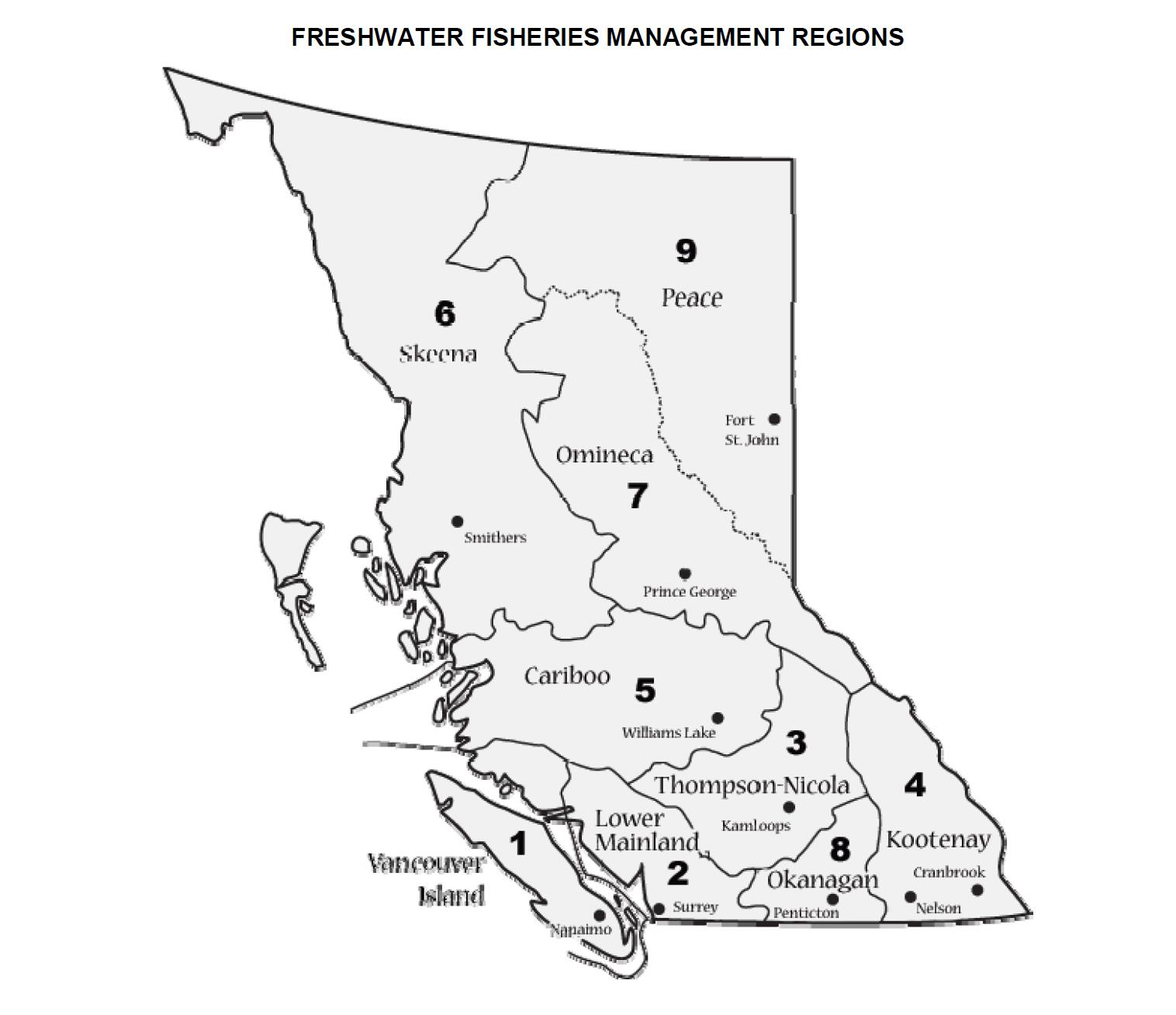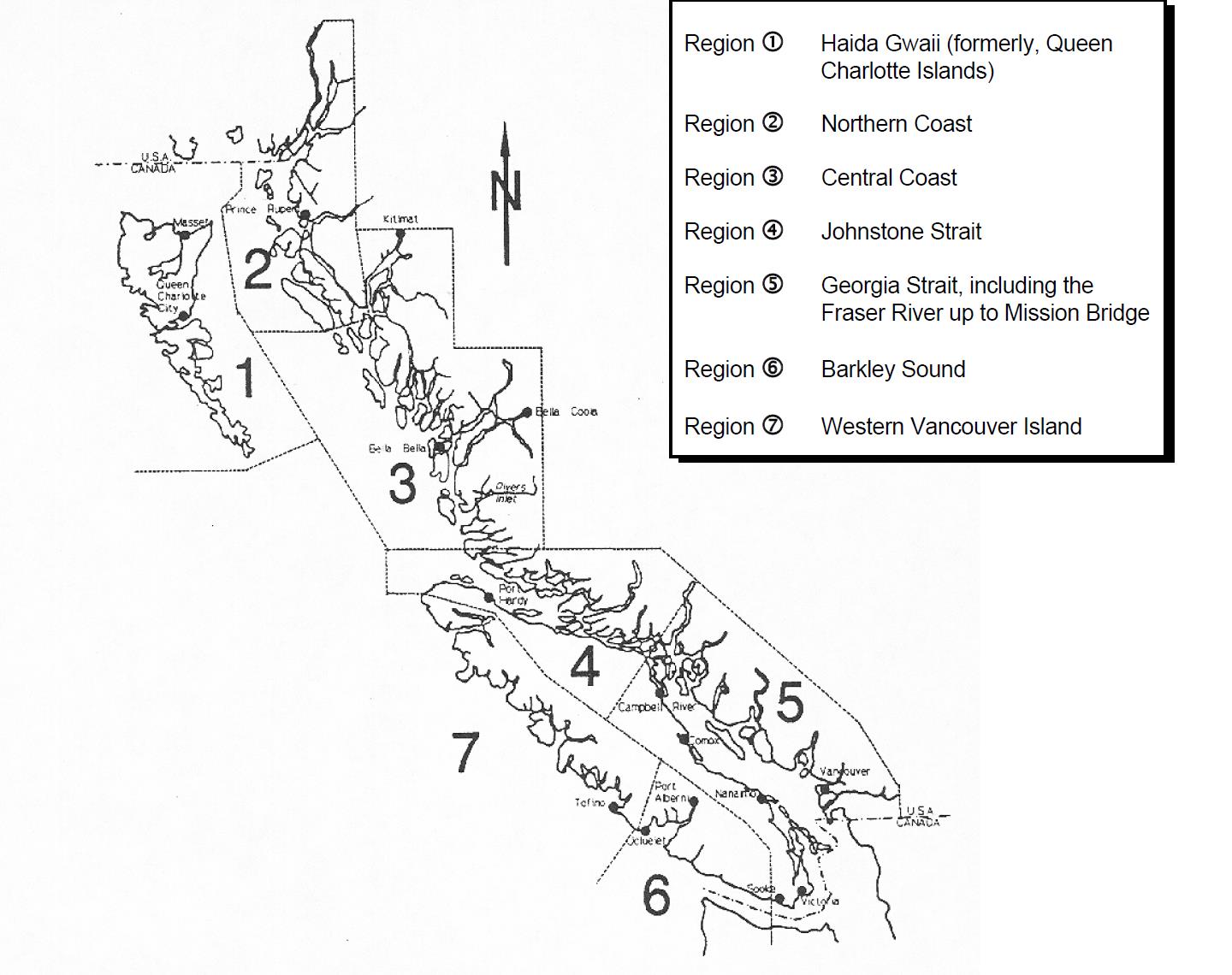Recreational sector workbook
Current status: Closed
Public consultation was opened on October 1, 2018 and closed to new input on December 2, 2018.
The Committee on the Status of Endangered Wildlife in Canada has conducted an emergency assessment of Thompson and Chilcotin Steelhead Trout and found them to be endangered. The Minister of Environment and Climate Change must form an opinion as to whether or not there is an imminent threat to the survival of these populations. If her opinion is that imminent threat exists, the Government of Canada must decide whether or not to list the populations under the Species at Risk Act (SARA). A Cost-Benefit Analysis (CBA) is being undertaken to support the listing decision. The analysis follows the Treasury Board of Canada guidance document: Canadian Cost-Benefit Analysis Guide: Regulatory Proposals.
The scope of the cost-benefit analysis is defined by the Management Scenarios that identify the potential closures that will be implemented if Thompson and Chilcotin Steelhead are listed under the Species at Risk Act (SARA). Refer to Management Scenarios: Thompson and Chilcotin Steelhead for a detailed description of the full measures. The purpose of the Cost Benefit Analysis is to assess the impacts of the Scenarios and not to determine what management measures will be implemented under a Listing decision. Any questions specific to the proposed Management Measures under a SARA Listing decision of Thompson and Chilcotin Steelhead can be directed to the Species at Risk Program at sara.xpac@dfo-mpo.gc.ca.
This Workbook is intended for individuals to provide response and is divided into three Sections:
- Section A has questions specific to tidal water anglers.
- Section B has questions specific to freshwater anglers.
- Section C is focused lodges and charters that provide services to recreational anglers.
This questionnaire is not a survey, as such, it is understood that the views expressed are opinions of knowledgeable stakeholders and not considered representative of the entire recreational angling community.
Demographic Question (All respondents please answer):
1) In which region do you reside if you are an angler? (Or, which region are you operating out of if you are a lodge or charter/guide business?) Please select one from the following list:
Note:
| Vancouver Island | Omineca | Johnstone Strait |
| Lower Mainland | Okanagan | Georgia Strait |
| Thompson-Nicola | Peace | Barkley Sound |
| Kootney | Queen Charlotte Islands | West Coast Vancouver Island |
| Cariboo | Northern Coast | Outside of British Columbia |
| Skeena | Central Coast | Outside of Canada |
Section A.
Please refer to the proposed measures in the Management Scenarios for details on potential recreational fishing closures while responding to these questions.
1) Are you a Tidal Water Angler? (Y/N)
If No Skip to Section B
Only complete the rest of Section A if you answered Yes to Question 1.
3) On average, a B.C. resident angler spends 10.7 days tidal water fishing in a typical year. On average, over the past 3 years, how many days do you spend tidal water fishing per year? (Check one that applies the most)
4) Please refer to the proposed measures in the Management Scenarios for details on potential fishing closures under a SARA listing of Thompson and Chilcotin Steelhead while responding to these questions. Do you fish in the times and areas identified for potential closure in the proposed Management Scenarios? (Y/N)
If No, Skip to Section B.
Only complete the rest of Section A if you answered Yes to Question 4.
6) In which city/region (list provided in the demographic question) do you typically purchase your angling supplies?
- Food
- Equipment
- Fuel
- Other?
8) If TH/CH Steelhead were listed under the Species at Risk Act and the proposed management closures were implemented, how would you change your fishing during the time/area closures? (Select one that applies the most).
Section B.
Please Refer to Management Scenarios for details on proposed Recreational fishing closures while responding to these questions.
9) Do you Freshwater Angle?
If No, Skip to Section C
Only complete the rest of Section B if you answered Yes to Question 9.
11) On average, in 2010 a B.C. resident freshwater recreational angler spent 14.6 days freshwater fishing per year. On average, over the past 3 years, how many days do you spend freshwater angling? (Check one that applies the most)
12) Please refer to the proposed measures in the Management Scenarios for details on potential fishing closures. Do you fish in the times and areas identified for potential closure in the proposed Management Scenarios?
Only complete the rest of Section B if you answered Yes to Question 12.
13) If yes, what species do you fish in the potentially affected freshwater time/areas? (Check all that apply):
14) Based on the proposed Management Scenarios, what percentage of your total freshwater fishing days do you spend fishing in the potential closures time/areas?
15) In which city/region (list provided in the demographic question Q. 1) do you typically purchase your angling supplies?
- Food
- Equipment
- Fuel
- Other?
17) If TH/CH Steelhead were listed under the Species at Risk Act and the proposed management closures were implemented, how would you change your fishing during the time/area closures? (Select one that applies the most).
Section C.
18) Are you a lodge or charter or both? (Check one)
19) Do you provide services to Freshwater angling, Tidal Water angling or both? (Check one)
21) What are the top 3 species that your company specializes in? Please answer based on your response to question 19. If you service both freshwater and Tidal, please respond in both columns. (List top 3)
| If you service Freshwater Anglers, provide list below | If you service Tidal Water Anglers, provide list below |
|---|---|
| 1) | 1) |
| 2) | 2) |
| 3) | 3) |
22) Based on available literature, the average profit margin is 20% for lodges and 25% for charters. On average, what is your annual profit margin after considering all expenses, including wages and salaries? (Please provide percentage only).
- Profit percentage for lodge ___%
- Profit percentage for charter ___%
23) During which months does your business operate? (Please provide number) From month ______ to month _______.
24) How many staff do you employ including yourself? (Please provide number and check appropriate box)
25) In which city/region (please refer to list provided in question 1) do you typically purchase your supplies?
- Food
- Equipment
- Fuel
- Other?
26) Please refer to the proposed measures in the Management Scenarios for details on potential fishing closures. Based on the closures time/areas outlined in the proposed Management Scenarios, do you take your clients to the potentially affected freshwater areas? (Y/N)
Only complete the rest of Section C if you answered Yes to Question 26.
29) If TH/CH Steelhead were listed under the Species at Risk Act and the proposed management closures were implemented, please explain how you would adjust your business operations? Check one.
Thank you for your input.
Please return the completed workbook to sara.xpac@dfo-mpo.gc.ca or 200 – 401 Burrard St. (15 fl. Policy), Vancouver, BC V6C 3S4.

Figure 1: Freshwater Fisheries Management Regions
- Skeena
- Peace
- Fort St. John
- Prince George
- Omineca
- Smithers
- Cariboo
- Williams Lake
- Thompson-Nicola
- Kamloops
- Lower Mainland
- Surrey
- Vancouver Island
- Nanaimo
- Okanagan
- Penticton
- Kootenay
- Cranbrook
- Nelson

Figure 2: Tidal Water Fisheries Management Regions
- Haida Gwaii (formerly, Queen Charlotte Islands)
- Northern Coast
- Central Coast
- Johnstone Strait
- Georgia Strait, including the Fraser River up to Mission Bridge
- Barkley Sound
- Western Vancouver Island
- U.S.A.
- CANADA
- Masset
- Queen Charlotte City
- Prince Rupert
- Kitimat
- Bella Coola
- Bella Bella
- Owers Inlet
- Port Hardy
- Campbell River
- Comox
- Vancouver
- Victoria
- Sooke
- Nanaimo
- Port Alberni
- Ucluelet
- Tofino
- Date modified: